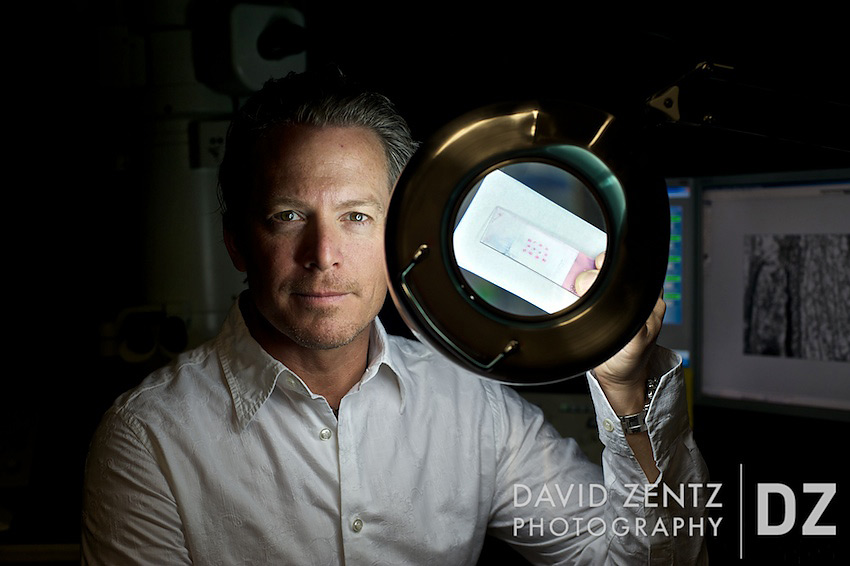
Last week I drove down to the UC Irvine campus to photograph Hans Keirstead for the Chronicle of Higher Education. Keirstead and a research partner at the Reeve-Irvine Research Center are superstars in the field of genetic research. The two, in collaboration with the Geron Corporation, a private drug company, have recently developed a method for using human stem cells to regrow myelin, which forms a protective sheath around the spinal cord, and have used it to restore motor function in paralyzed rats. Now the FDA has approved the first-ever trial on humans, which is to be conducted by Geron. It seems like some pretty exciting research that could eventually yield amazing results for people with debilitating spinal injuries. Adding to the relevance of the story, a judge recently overturned the Obama administration’s attempt to loosen the reigns on federal funding of human stem-cell research. The article talks about the research and the advantages of using private funding for this type of research.
For the shoot I was only asked not to come back with a man standing in a lab wearing a white lab coat. When I got there it was a pretty standard looking laboratory, but upon asking for a quick tour prof. Keirstead showed me a separate room out of the way of the main space, which was somewhat bustling with a number of students and lab assistants. The initial draw was a large microscope situated in the middle of the room, but it was still too standard lab to give me the unique image I was looking for. I briefly considered lighting the room with colored gels, but that’s not so much my style. I prefer to use minimal lighting and better yet, to utilize whatever natural light sources I find in a given space. So when I saw a large magnifying glass with a beautiful, bright light built into it I was immediately drawn to it. As a fail safe I of course had lugged in my entire lighting kit, but ended up keeping them in the case for this one. Then we spent half an hour finding different angles to shoot using only the light of the magnifying glass. To bring the story into the photo he held up a slide of micro-thin slices of rat spinal cord that was used in the research. In the end we produced a shot that’s both eye-catching and relevant to the story, so I’ll count it as a success. Making it all the better was the subject’s patience and willingness to cooperate, due, in addition to his friendly demeanor, to some good experience in front of the camera. He’s previously sat for the likes of Vogue magazine, which, with 4 hours of shooting and a whole team of stylists and assistants, made my little one-man shoot seem like a walk in the park.